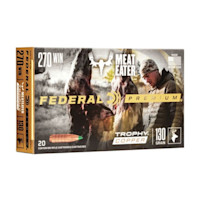
If you are bear hunting from late May into June, your hunt will be influenced by the bear rut. Knowing all you can about it will make you a better hunter.
A 1980 study by Kim Barber and Frederick Lindzey conducted on Long Island, Washington, found that female bears are in estrus ranging from six to 16 days each spring with the average time being 9.25 days. The length of estrus often depends on how quickly the sow is bred. During the research period, male bears were with females from two to five days, indicating that this was when they actually bred. It’s important to note that this data was collected from radio-collared black bears. Black bears often have multiple partners to avoid a single, sterile mating. Biologists once observed a female grizzly bear breed 10 times with four different males in a two-hour period.
During Barber and Lindzey’s research, they first observed males in the presence of females between May 10 and May 21. These are important dates for bear hunters because they’re the first, early stages of the rut. The last associations observed between males and females were around July 4, indicating the end of bear breeding.
The bear rut is about a 50- to 54-day cycle starting in mid-May and running through June, according to this research. Most of the time, the male and female bears were in each other’s presence for two- to five-day intervals, and receptive females typically had more than one male in her presence.
Interestingly, the peak breeding period was between June 11 and June 30. These are important dates to remember, but the peak breeding period isn’t necessarily going to be the best hunting—though it very well may be.
The study found that “short term associations” between boars and sows start in mid-May. These contacts indicated that the boars were checking the sows for estrus, but they moved on once they determined the females weren’t receptive. A 2013 study by California State University at San Marcos concluded that bears use chemosensory communication to understand when a female is in estrus—another point proving just how critical their olfactory senses truly are for their survival.
Barber and Lindzey defined “long term associations” as lasting between two to five days. These interactions indicate the actual breeding period, which typically took place between June 11 and June 30. However, the first sows in the study were bred on May 21.
During a sow’s actual breeding period, multiple males may visit. Because of this, cubs in the same litter could have different fathers. Researchers noted that dominance among males was determined before the actual breeding period. In the stable population observed, boars weren’t fighting during this time, but in a hunted population where dominant males are being killed, dominance is less predicable and males are more likely to actively compete for females. Females also played a role in sexual selection by staying close to the dominant male during her estrus.
Male bears dramatically extended their home ranges during this 50- to 54-day period. This is perhaps the biggest takeaway for spring bear hunting because big boars will be on the move looking for receptive sows. Whenever one comes into estrus she’ll attract multiple males, so wherever she is will be the hotspot.
If you’re hunting over bait during this time, know that male bears may not lock down on a site and will be less predictable. However, anything could show up at any time, especially if a sow without cubs comes into the bait. It’s important to note that boars are primarily interested in sows without cubs. Keep all this in mind for some great discussion at bear camp this spring—you might find you know more about the bear rut than anybody else around the campfire.
Feature image via Tony Bynum.






